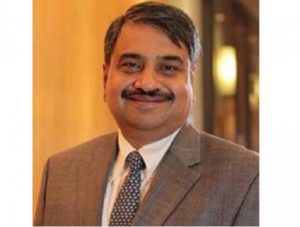
Q1. What is the economic outlook for the rest of the year – both globally and for India?
Since I am closest to India, my answers will draw on the visibility that one has from India. The economic outlook in India is, in my mind, a matter of concern. That is for two reasons: first, there will be a considerable cost of the lockdown; and second, the reopening of the economy will not be driven by economics, but by governmental policy. The latter is a considerable problem as economic forces will not be driving the resumption of economic activities, but that they will be dependent upon the actions of various departments of the government. Both of these taken together with the limited fiscal stimulus offered make the near term outlook for India concerning. Finally, the parlous state of the banking / financial system is an incremental area of concern. An area that concerns me is the displacement of the private sector by the public sector in the financial services arena on account of issues such as PMC Bank / Yes Bank etc. This is a worrying new development which is driving cost of borrowing for the government down, but much higher for all others. As the private sector is the principle provider of new credit, the increased risk perception of this sector does not augur well for credit growth. These are broadly negative trends, however, time will, as always, be the healer.
Q2. What impact will the crisis have on businesses – both large scale and SMEs. Which sectors will be the most hit and which least?
Both businesses - small and large - are going to be impacted by a demand reduction which will lead to P&L related issues inevitably. In India, both large and small businesses, tend to be poorly capitalised. However, that tendency is more acute with respect to smaller businesses. Entities with a weak capital structure, with limited undrawn/committed lines will find it difficult to restart. Those that have better financial characteristics will muddle through. Expect inflationary pressures to be higher as distribution systems rerated activity to suit demand. One positive that requires to be highlighted is that Indian businesses were retooling their business for difficult times even before Covid-19. They were reducing drawals from bank lines and are perhaps better positioned to deal with the crisis now.
Q3. What should SMEs do in current crisis where business is down and there are expenses to meet?
MSME's understand their businesses well. They need to prioritise survival. they need to de-risk and aim to remain solvent so as to take part in the opportunities of the future. Growth is not the objective, keeping solvent is. Minimise working capital requirements, minimise expenses and at the margin stay profitable and solvent.
Q4. What should salaried people do in the current situation? What risks and opportunities do they have?
Simpler problem. Try and stay salaried. Build the nest egg.
Q5. How can Banks help in this situation?
With the governments guaranteeing loans to small businesses, I see no liquidity issues arising there. It is in the bank's interest to make these facilities available as they will keep the bank's balance sheet from being impacted. The question is whether this is enough or whether demand destruction will be of the order of magnitude that dwarfs these measures. Bank's in their self interest, will aid in providing liquidity.
 P R Seshadri is the former CEO of Karur Vysya Bank, India and BFC Bank, UK. He is an experienced senior banker with varied experiences across business and functional lines including product management, distribution, risk, operations, finance and enterprise level management. He has worked across geographies including London, Singapore and Mumbai.
P R Seshadri is the former CEO of Karur Vysya Bank, India and BFC Bank, UK. He is an experienced senior banker with varied experiences across business and functional lines including product management, distribution, risk, operations, finance and enterprise level management. He has worked across geographies including London, Singapore and Mumbai.
He graduated from Delhi College of Engineering with Distinction in Electrical Engineering and holds an MBA from Indian Institute of Management (IIM) Bangalore.
To comment or receive more such wisdom, please register on www.gyanalogy.com/login



